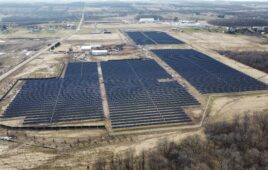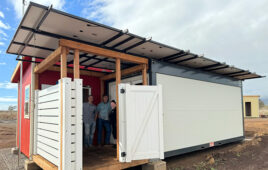Most solar installers wouldn’t think of the National Electrical Code as leisure reading. But experts working on the PV provisions of the Code want to make the NEC into something that flows more like a novel than like a set of disjointed and confusing commandments about PV wiring.
That was the message coming out of SPI conference sessions on the NEC. Conference speakers acknowledged that PV provisions are scattered in several different places throughout the Code. This disorganization can make it tough to figure out how to set up installations that meet Code provisions. And the disorganization makes things is as difficult for local building inspectors as for the installers who set up PV gear.
The recently released 2014 version of the NEC begins to address this situation by consolidating some PV provisions and reorganizing sections of Article 690 that pertain to definitions, PV circuit requirements, means of disconnecting PV arrays, and wiring. Moreover, says Enphase Energy director of codes an standards Mark Baldassari, the effort is continuing with the 2017 version of the Code. The goal, he says, is to get the Code so well organized and to clarify its terminology to a degree that gives it the cohesiveness approaching that of a literary work.
Still, not all the 2014 revisions to the Code have come without controversy. Provisions for rapid shutdown of the PV array in the case of an emergency, for example, still don’t suit some first responders.
One problem is that NEC rapid shutdown provisions don’t apply to wiring within ten feet of the array. The shutdown mechanism need only de-energize conductors more than five feet long inside a building or that are more than ten feet away from the PV array. In other words, the rapid-shutdown requirement doesn’t reduce the potentially lethal voltages that firefighters may see if they are forced to work near the PV array.
It looks as though the 2017 version of the Code could begin to address this concern. To date, the technology just hasn’t been available to make the necessary array-level disconnects practical. A challenge for the future is to produce module-level disconnect hardware that is reliable and economical enough to make possible an NEC code provision says Ward Bower, a retired member of the Sandia National Lab technical staff and now a PV consultant.
The next version of the NEC could also begin grappling with difficulties applying the Code to large PV installations. The problem here is that current provisions aren’t flexible enough to be practical when hundreds of modules are involved. The code is helpful in situations where a few dozen PV modules mount on a building. But it can be counterproductive in the case of utility-scale PV installations involving acres of panels and wiring.
For example, the Code currently requires a disconnect for every handful of modules. Were this provision faithfully applied to 100 MW solar power plant, it would entail installing hundreds of disconnect switches. The costs would be appreciable, and the resulting installation could well be less safe and reliable than if the switches were applied less aggressively.





Tell Us What You Think!